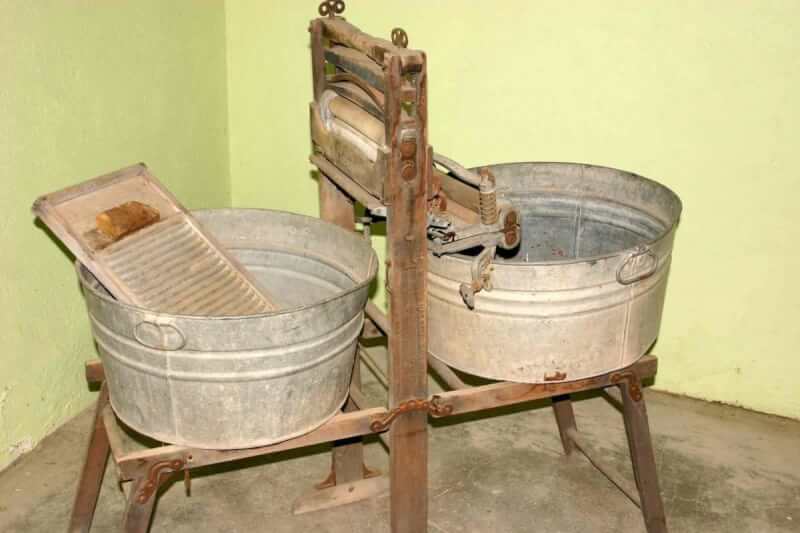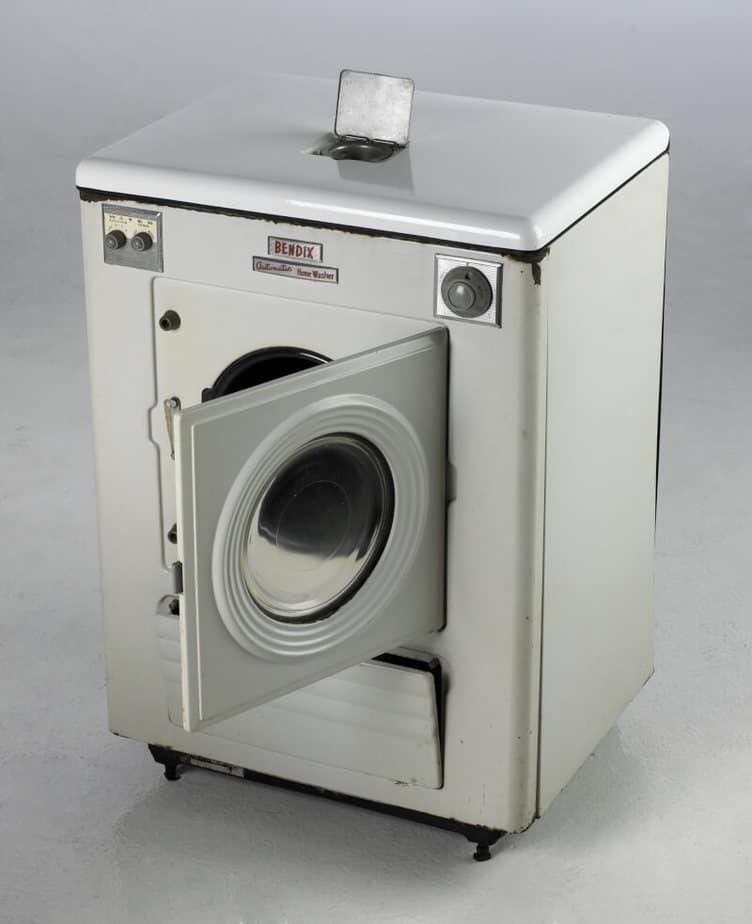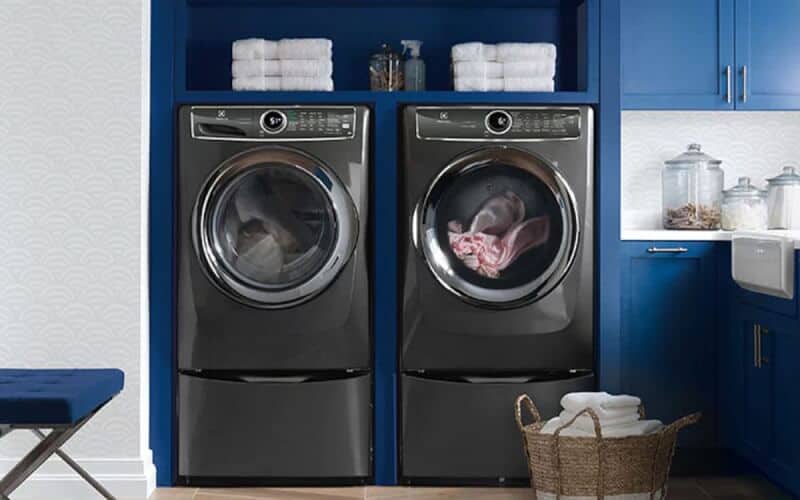A washing machine has a special role in our daily life as it saves our time to do house chores. But, have you ever thinking about washing machine history and its progress until exist in almost every house these days. When was it invented and how was the initial design?
It can be pretty interesting to know how it shifted from the very basic model of washboards to the modern version of washing machines that can perform automatically. As the number of people who use washing machines keeps increasing, equipping yourself with its history will give you broader knowledge about it.
Washing Machines Models from Time to Time
Let’s see the developments made in washing machines from the initial to recent models.
1. The First Model of Washing Machines

Firstly made debut around 1760s, the earliest model of washing machine got a patent in 1846. This model was performed manually by the human hands and featured a washboard. To clean the clothes, they rubbed into two surfaces inside the machine. This initial model lasted until 1927.
In the mid of 1800s, when the industrial revolution occurred, the manual washing machine model got several inventions. In 1850s, two Americans earned patents for their washing devices which were then known as the first model of modern washers.
Among early innovations made on the washing machine, the popular one was the addition of a new technology called a rotating drum. Hence, the initial design of modern washers already came with this drum technology.
Even though the technology used was still basic, it became significant development in the washing machine history and lasted up to the 19th century when the modern with steam water appeared.
2. Electric Model Washing Machines

Before the industrial revolution in America, all the previous models of washing machines included belts as well as steams during the operation. Meanwhile, home washing machines were operated manually using hands. Then, an invention came which a drum technology added to the machine and still employed recently.
There was also a corporation that created a washing machine from wooden materials back then in 1907. Since then, this corporation had limited its manufacturing only to producing washing machines.
Another product from the industrial revolution was actually electricity and it soon applied to the washing machine industry as well. It was none other than the Whirlpool Corporation which introduced the wringer washer that used electric motor in 1911.
3. The Wringers Ending

The wringers comprised of double cylinders that release the water from the clothes. However, the wringer could not completely dry out the clothes. It just reduced the water from the clothes, made the wet clothes damper. In the electric washer models, the wringer was powered by a motor.
The use of wringers still needed human involvement in the washing process which was a little bit dangerous since it often hurt the fingers. However, as the drum technology appeared, the wringers’ jobs the substituted by the spinning system in which the clothes twirled inside a holed container using a high speed.
The invention of the drying process was big in the washing machine history since it performed the tasks significantly better than the wringers. The innovation that spun force applied in the dryer first emerged prior to electricity, but then the electricity made the works much easier.
4. Automatic Washing Machines

In 1937, the first model of the automatic washing machine made its appearance in public after receiving a patent. When looking into the appearance and mechanical details, it already brought some of the recent features but it was not similar to the automatic washers we find nowadays.
It hadn’t included the drum suspension so that it needed to be secured into the floor using anchors. The price of automatic washers was completely expensive because it was made with pricey equipment too.
For example, the timer used costly tiny electric motors and the drum featured a double speed gearbox for heavy tasks.
The existing automatic models were likely connected to the water supply using short-term slip-on connectors. However, the following models already featured permanent connectors for cold and hot water.
Meanwhile, the recent model uses a cold water connector and paired with internal heaters. This heater feature allows users to raise the temperature of the water when they washing clothes.
5. Improvements on Washing Machines

Several improvements were made to present washing machines that could clean the clothes without destroying them. Before, the machine used different speeds to match the fabric textures of clothes. It was then replaced with a machine that splattered water through the clothes.
Another development was the addition of a clock timing into the machine. This helped the machine to be operated in an expected period. It reduced human intervention in monitoring the washing machine operation.
At the beginning of 1950, numerous washing machine manufacturers had included a spin-free feature that substituted the jobs of wringers. Few years after that, washing machines were available in five buttons with different functions such as to manage spin speed and control the temperature during the wash and rinse.
6. Modern Washing Machines

Modern washing machines popularly come in two main types, which include the top loader model and front loader model. The top loader model features a vertical washing cylinder and allows the users to put the clothes inside from the top of the machine. Its top has an agitator to present the motion needed by users.
Meanwhile, the front loader model uses a horizontal washing cylinder that represents the rotating drum. This design enables the clothes to put inside the cylinder from the front. During the cleaning process, both paddle and drum move the clothes around.
The gravity and motion work together to direct the water splash the clothed thoroughly when cleaning. The front loader models carry out the cleaning process better because they result in a thorough and dynamic wash process as well as use energy and water more efficiently.
Those are the developments of washing machines from time to time until resulting in the modern and recent model that we use today. Knowing various technologies from the simple to the sophisticated ones through washing machine history is fascinating as it’s a helpful appliance in our life.
